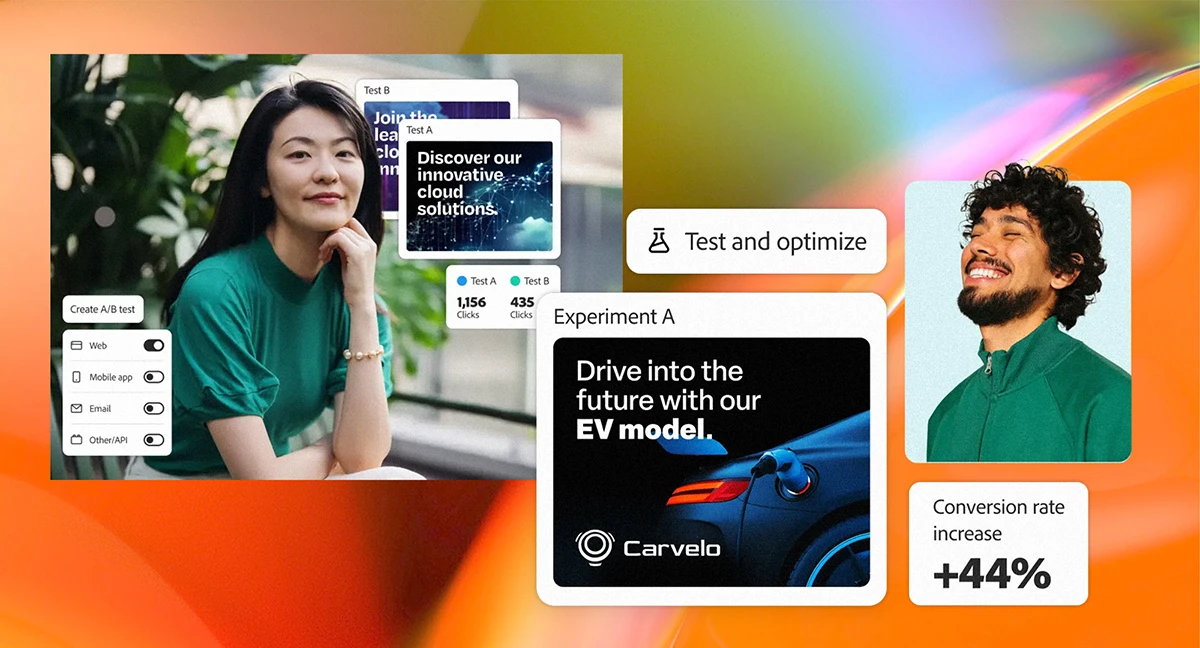
Adobe Target FAQs | Enterprise Tech Personalization Guide
Introduction
Enterprise brands face growing challenges in delivering personalized experiences across channels. Many leaders know personalization drives growth but are unsure how to scale it efficiently. Adobe Target helps solve this by centralizing testing, targeting, and personalization for digital experiences. This article answers key questions about Adobe Target, clarifying its role, use cases, and value for enterprise organizations.
This guide is written for Directors, VPs, and enterprise decision-makers exploring Adobe Target development and execution as part of their digital strategy. Readers will leave with clear insights into what Adobe Target does, how it works, and why it matters for enterprise tech performance.
Market Context: Disruption & Opportunity
Personalization has become a core expectation for modern consumers. Businesses face pressure to deliver relevant content, faster performance, and measurable results. Yet many enterprise teams struggle with disconnected systems and inefficient testing workflows. Adobe Target helps bridge this gap with unified testing, targeting, and automation tools that simplify execution at scale.
As enterprises shift to data-driven personalization, solutions like Adobe Target offer both flexibility and precision. This matters because consistent, real-time optimization drives stronger engagement and revenue. By understanding Adobe Target development and execution, leaders can move from fragmented testing to coordinated experience delivery that supports long-term growth.
FAQs Snapshot

What is Adobe Target?
Adobe Target is an enterprise platform for testing, targeting, and personalization. It allows brands to run controlled experiments like A/B and multivariate tests, manage audience segmentation, and automate content delivery. Adobe Target helps teams improve digital experiences through real-time optimization and insights from Adobe Experience Cloud.
What does Adobe Target do?
Adobe Target enables A/B testing, personalization, and automated recommendations across web and mobile channels. It helps enterprises deliver the right message to the right audience using behavioral and contextual data. The platform provides tools for designing, executing, and measuring test variations to improve conversion rates and engagement.
What is Adobe Target used for?
Adobe Target is used for optimizing websites, mobile apps, and digital campaigns through experimentation and personalization. Brands use it to identify which designs, messages, or experiences perform best. Its capabilities make it essential for companies that want data-backed decisions to enhance user experience and maximize ROI.
What is Adobe Test & Target?
Adobe Test & Target was the earlier version of Adobe Target, focused on A/B testing and segmentation. Today, Adobe Target expands on that foundation with AI-driven personalization, automated workflows, and deeper integrations across Adobe Experience Cloud. It continues the same mission but with modernized, enterprise-grade functionality.
How does Adobe Target A/B testing work?
Adobe Target A/B testing allows marketers to compare different versions of a webpage, email, or app feature to see which performs better. The system divides users randomly, collects performance data, and uses statistical analysis to determine winners. This data-driven process helps enterprises improve digital execution without guesswork.
What is Adobe Target personalization?
Adobe Target personalization uses machine learning to deliver individualized experiences to users. It analyzes behavioral, demographic, and contextual data to serve the most relevant content. Enterprises use Adobe Target personalization to boost engagement, increase conversions, and improve retention.
Benefits of Adobe Target
Adobe Target gives enterprise organizations a unified way to test, target, and personalize experiences. The main advantage is efficiency: it enables faster testing and deployment cycles while ensuring accuracy in personalization. Enterprises benefit from centralized control, advanced automation, and scalable audience insights. Adobe Target development supports smoother campaign execution and optimization, while Adobe Target execution ensures consistent delivery across all digital platforms. Additional benefits include improved conversion rates, reduced manual effort, and stronger data integration.

Let’s kickstart the conversation and design stuff people will love.

Deep-Dive Sections

What It Is & Why It Matters
Adobe Target is a platform that empowers businesses to test and personalize digital experiences. It combines analytics, automation, and AI to make experience management data-driven. For enterprise teams, this matters because personalization directly influences customer engagement and retention. With Adobe Target development and execution, teams can manage campaigns with agility while aligning with customer expectations.
How It Works
Adobe Target works by integrating with other Adobe Experience Cloud products to deliver real-time testing and personalization. Users create experiments, define target segments, and track performance metrics through the interface. Its machine learning models power automated personalization that adjusts to user behavior. The result is continuous optimization and faster iteration cycles.
When to Use It (and When Not To)
Enterprises should use Adobe Target when they want to improve conversion rates, user engagement, or digital experience performance. It is ideal for organizations with enough traffic to support statistically valid testing. However, smaller teams with limited data or resources may find it more complex to maintain without support from an Adobe Target agency or partner.
Tools or Platforms Involved
Adobe Target connects seamlessly with Adobe Analytics, Adobe Experience Manager, and Adobe Audience Manager. Together, these tools form an integrated ecosystem for content management and optimization. This connection allows enterprises to use unified data for testing, segmentation, and personalization at scale.
Cost Considerations
Adobe Target pricing depends on enterprise scale and feature usage. Costs typically include licensing, implementation, and training. While initial investment may seem high, the long-term ROI from improved conversion rates and personalization efficiency often justifies the expense.
Integration or Setup Requirements
Implementing Adobe Target requires coordination between marketing, analytics, and IT teams. The setup involves tagging digital properties, integrating data sources, and aligning user permissions. Enterprise companies often work with Adobe Target development partners like G&Co. to streamline onboarding and ensure smooth execution.
Scalability & Flexibility
Adobe Target scales with enterprise demand. It supports multiple environments, complex audience segmentation, and multilingual content delivery. Its flexibility allows brands to test, target, and personalize across global campaigns while maintaining local relevance.
Alternatives or Comparisons
Adobe Target competes with tools like Optimizely, Google Optimize 360, and Oracle Maxymiser. However, Adobe Target stands out for its integration with the Adobe Experience Cloud, advanced AI personalization, and enterprise-grade support.
Trends
In 2025, personalization is shifting toward AI-driven automation and predictive analytics. Adobe Target leads this trend by embedding machine learning into experience management. Enterprises adopting Adobe Target development and execution strategies gain an edge in delivering adaptive, data-driven digital experiences.
How G&Co. Can Help

G&Co. helps enterprise clients implement, optimize, and scale Adobe Target solutions. Our team brings hands-on experience in Adobe Target development, execution, and integration across enterprise environments. We support strategy design, data connection, and campaign optimization to ensure brands achieve measurable growth. With expertise in digital transformation and personalization, G&Co. helps leaders move from testing to impact. Talk to us to clarify your strategy and move forward with confidence.
Conclusion & Next Steps
Adobe Target helps enterprise brands drive personalized experiences through testing, targeting, and automation. It provides the clarity and control needed to improve digital performance. Leaders who understand what Adobe Target does and what Adobe Target is used for can make faster, data-backed decisions.
At G&Co., we’ve worked alongside clients to implement similar shifts through digital strategy, customer journey redesign, and platform modernization. Our expertise enables brands to turn strategy into measurable advantage. Still have questions? Reach out and let’s solve them together.






%20(1).png)





